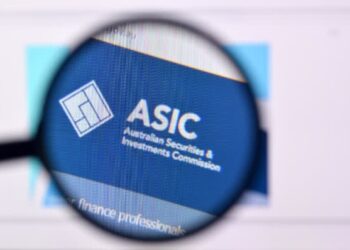Financial Services Minister Daniel Mulino has directed Treasury to consult on the statutory options available to deal with the Compensation Scheme of Last Resort (CSLR) 2025–26 revised claims, fees and costs estimate.
At the start of July, the CSLR operator released the FY25–26 revised levy estimate, which lowered the amount attributable to the financial advice subsector to $67.3 million.
However, as this is still significantly above the $20 million subsector cap, the CSLR notified Minister Mulino of the need for a special levy of $47.29 million.
Treasury’s consultation paper, released on Friday afternoon, said the purpose of the consultation is to “seek stakeholder views on options” for how Minister Mulino should exercise his ministerial powers.
“The consultation takes place in the context of the post-implementation review of the Compensation Scheme of Last Resort announced by the government on 31 January 2025,” it said.
Treasury also said the feedback would inform the CSLR post-implementation review, scuppering any hope that the findings would be released soon.
Under the Corporations Act, the minister has a range of options at his disposal to deal with the amount above the subsector cap.
Broadly, these options include spreading the compensation payable by the CSLR over a longer period of time, applying a special levy to the subsector that has exceeded the cap, or applying a special levy across additional subsectors as well.
Importantly, as the consultation paper noted, the minister’s “power to exercise these options is discretionary” and there are no requirements for a particular action and, indeed, no time frame for the minister to make the decision.
The options available to Minister Mulino are also not mutually exclusive and he can choose to make a determination that “both imposes a special levy and spreads compensation out over a longer period and may choose to make a determination that imposes a special levy that does not recover the full amount of the excess”.
“In circumstances where an amount that is less than the full excess is levied (including when no special levy is imposed), the amount of shortfall would be added to the CSLR operator’s estimates for subsequent levy periods,” the paper said.
Responding to the announcement, Financial Services Council (FSC) chief executive Blake Briggs said the FSC would “closely review the options outlined in the consultation paper”.
“The industry welcomes the minister’s engagement on the CSLR special levy,” Briggs said.
“In considering whether and how to determine a special levy, the minister should have regard to the risk of entrenching further moral hazard into the scheme through underwriting investment losses, the financial sustainability and viability of subsectors, and spreading the cost as widely as possible to minimise the burden on any one sector.”
He also urged the minister to “prioritise responding to the outcomes of Treasury’s review of the design of the scheme”, which was first announced in January.
“That review was established to assess the scheme’s framework, scope and sustainability on an ongoing basis. If the industry is going to bear the costs of the $47 million special levy, the industry needs assurance that the scheme will not continue to blow out year on year,” Briggs said.
“Already we have seen the scheme blow out by 840 per cent from Treasury’s initial estimate of $8.1 million per year to $75.7 million. It is simply not sustainable to have an indeterminate and growing liability being imposed on the parts of the sector doing the right thing, to pay for the sins of others.”
The consultation is open until 29 August.




People who have done wrong for personal benefit should be in prison, only way to stop this from happening in the future. First Guardian, Shield Master Fund, Global Capital Property Fund. Plus change the SMSF setup process. We have had to deal with over 400 clients with almost $250m lost.
It shouldn’t be about the $47Mill excess.
It should be about the Govt THEFT of the first $20 Mill from innocent Advisers.
then it will be another $47Mill Theft from Good Advisers.
Followed by years more of Govt Theft from Good Advisers.
CANBERRA MUST BE STOPPED FROM THEIVING FROM INNOCENT ADVISERS – FULL STOP.
So take the government to court is what needs to occur.
Jim Chalmers needs to be taken to court.
Here’s an idea, target the extra levy on those responsible, related and directly or indirectly involved. What about the AFSL’s auditor, the PI insurer, the products that approved the funds onto their APL, the research houses that gave them any sort of tick? The people who assisted in applying for the AFSL licence, the regulator that approved the license, the regulator that was supposedly regulating and monitoring the practices. …. so many options that could have had an inkling of what was occurring. What’s the point of all these functions in the industry if not to catch dodgy practices?
No instead of that, completely unrelated businesses who had zero to do with it and zero opportunity to catch it will wear the bill.
What’s the point of being regulated? You get the privilege of paying for the regulator who’s asleep at the wheel, then compensating the customers of dodgy businesses then paying again for the regulators after the fact investigations and again for the administration of the compensation you just funded, all while paying to be compliant and professional yourself. When the alternative is be unregulated and it’s a free for all.
The system couldn’t be more broken
This. 100% spot on.
Anyone think Evans and Partners should be paying for Dixon’s mistakes???
yes
Yeah, I do
Nerida Coles doesn’t
“Already we have seen the scheme blow out by 840 per cent from Treasury’s initial estimate of $8.1 million per year to $75.7 million.
Which clown(s) in Treasury came up with that estimate ?
they already knew Dodgy Dixon’s was being funded via CSLR to bail out the Canberra Bureaucrats that got scammed by Dodgy Dixon’s, so obviously this $8.1 Mill figure WAS A TOTAL LIE !!!!!
WHOSE HELD ACCOUNTABLE FOR SUCH LIES CANBERRA ????????????????
This is going to sound crazy, a really really strange idea, but just listen for a minute, let your mind go outside the box … how about the people who steal the money pay it back. You know, the criminals who actually end up with the money in their bank account, take if from them.
Mind Blown! Truly revolutionary thinking!
That’s crazy thinking. Surely you shouldn’t get punished for stealing and destroying your clients retirement plans!
A $47,000,000 bill. Shared between only 15,000+ advisers (1,860 licensees). Unbelievable.
This is BS, why should advisers pay for corporate criminal actions (Dixon etc)
Especially when Evans & Partners are still operating.
Nothing short of corruption at the highest levels. Requires a Royal Commission.
This then is an issue about about who is involved in the systematic destruction of small business and who is working in collusion to make it all happen. ASIC, Treasury, the Corporate’s committing fraud.